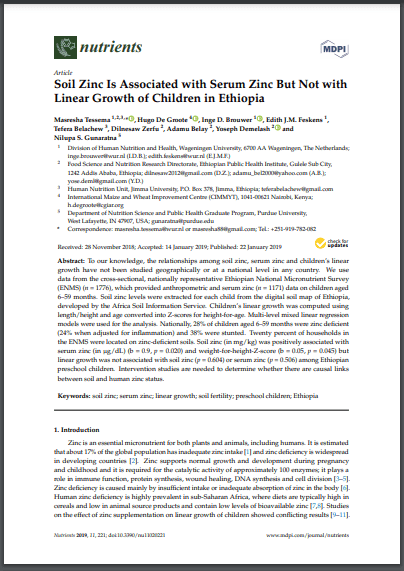Human zinc deficiency is a global public health problem. Many African soils are zinc deficient (ZnD), indicating fertilizers could increase crop yields and grain Zn levels, thereby increasing Zn in the food supply and alleviating human Zn deficiency. To analyze associations among soil Zn, human Zn deficiency, and child nutritional status, we combined the Ethiopian soil Zn map and the Ethiopian National Micronutrient Survey (ENMS). ENMS provides representative, georeferenced data on child nutritional status using anthropometry of children under five years old (CU5) and on human Zn deficiency among CU5 and women of reproductive age (WRA) using the recommended biomarker, serum Zn. ZnD soils mostly occur in lower altitudes, which are less populated and outside the main crop-producing areas. Serum Zn deficiencies were high, and correlated to soil Zn for children, but not for WRA. About 4 million Ethiopian CU5 are ZnD, and, of these, about 1.5 million live on low-Zn soils (< 2.5 mg/kg), while 0.3 million live on ZnD soils (< 1.5 mg/kg). Therefore, if Zn fertilizers are only applied on ZnD soils, their impact on child Zn deficiency may be limited. Greater impact is possible if Zn fertilizers are applied to soils with sufficient Zn for plant growth and if this results in increased grain Zn. Optimal soil Zn levels for plant and human nutrition may be different, and context-specific optimal levels for the latter must be determined to develop nutrition-sensitive fertilizer policies and recommendations.

